News

Controlled Water Releases Begin at Victoria, Randenigala and Rantembe Reservoirs
The Mahaweli Authority has commenced regulated water discharge operations at three key reservoirs after persistent heavy rainfall raised water levels in their catchment areas.According to the Authority, the sluice gates were opened at 10.20 a.m. today as part of routine flood control measures. At the Victoria Reservoir, six sluice gates were lifted by 70 centimetres each to release excess water.
At the Randenigala Reservoir, two gates were opened, with one raised by 2.5 metres and the other by 1 metre. Meanwhile, at the Rantembe Reservoir, two sluice gates were adjusted to 2 metres and 2.5 metres, respectively.
The Mahaweli Authority stated that the controlled releases were necessary to manage rising reservoir levels caused by recent rainfall. Members of the public, particularly those residing in downstream and low-lying areas, have been advised to remain alert and take necessary safety precautions.
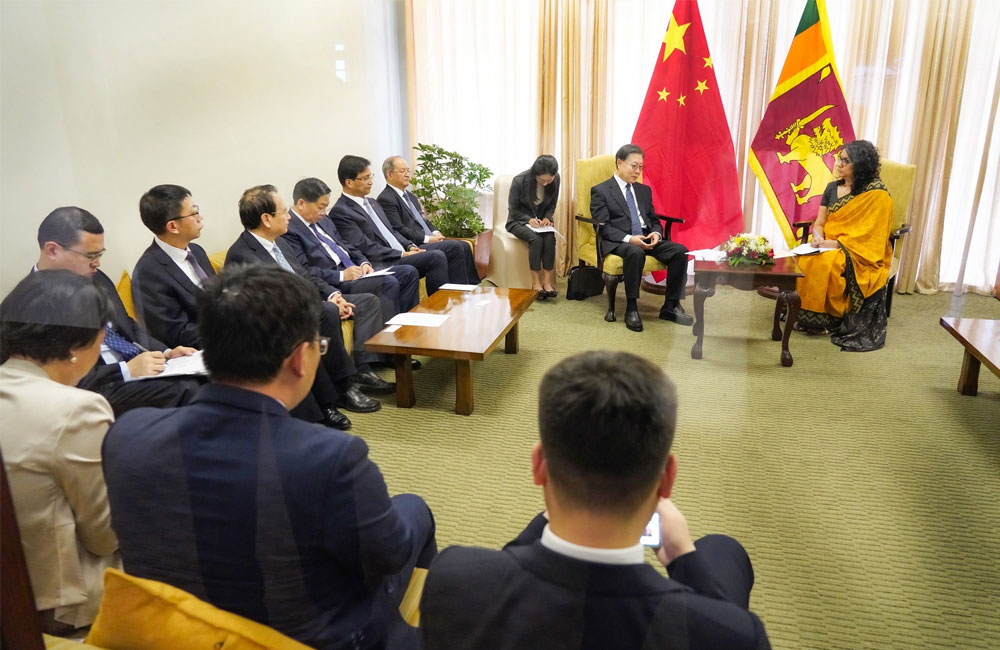
PM Harini Thanks China for Swift Support During Sri Lanka’s Disaster Response
Prime Minister Dr. Harini Amarasuriya has acknowledged and appreciated the Government of China for the prompt support extended to Sri Lanka during its recent disaster response efforts.Her remarks were made at an official meeting with Wang Dongming, Vice Chairman of the Standing Committee of the National People’s Congress (NPC) of China, held at the Parliament complex, according to the Office of the Prime Minister.
Discussions during the meeting focused on the long-standing bilateral relationship between Sri Lanka and China, as well as opportunities to deepen cooperation across a range of sectors.
The Prime Minister noted that Sri Lanka has now moved beyond the emergency rescue stage and entered the post-disaster recovery and reconstruction phase. She also expressed appreciation for the contributions of volunteers and the broader international community who supported rescue operations during the crisis.
Vice Chairman Wang Dongming extended his condolences to those affected by the disaster and stated that China would continue to assist Sri Lanka not only during the recovery and reconstruction phase, but also in its broader social and economic development. He reaffirmed China’s willingness to work closely with Sri Lanka in both regional and international engagements.
The meeting also reviewed key areas discussed during the Prime Minister’s recent visit to China, including assistance for school uniforms and fertiliser supplies, cooperation in digital education, road development projects, and ongoing collaboration in the education, health, and cultural sectors.
The discussions concluded with both sides reiterating their shared commitment to further strengthening bilateral ties founded on mutual trust, understanding, and a long-standing friendship, the Prime Minister’s Office said.
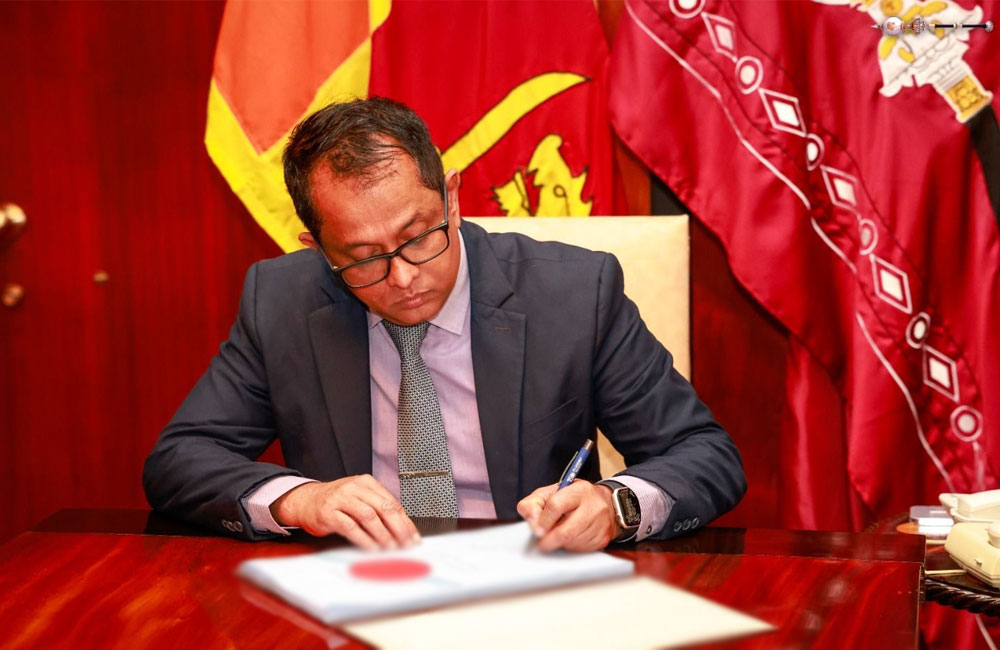
Speaker Certifies Three Key Amendment Bills, Clearing Way for New Acts
Speaker of Parliament Dr. Jagath Wickramaratne informed the House today that he formally endorsed the certificates for three important amendment Bills yesterday , completing the legislative process required for them to become law.The certified Bills are the Social Security Contribution Levy (Amendment) Bill, the Betting and Gaming Levy (Amendment) Bill, and the Strategic Development Projects (Amendment) Bill, according to a statement issued by the Department of Communications of Parliament.
The Social Security Contribution Levy (Amendment) Bill was introduced to amend the Social Security Contribution Levy Act, No. 25 of 2022. The Bill was presented to Parliament on October 9, 2025, and subsequently approved on December 5, 2025.
The Betting and Gaming Levy (Amendment) Bill, also passed on December 5, seeks to revise Section 2 of the principal law. The amendments limit the application of the ten per cent gross collection levy to the period from April 1, 2023, to October 1, 2025, increase the levy on bookmakers and gambling businesses to 18 per cent from October 1, 2025, and raise the casino entrance fee for Sri Lankan citizens to USD 100.
Meanwhile, the Strategic Development Projects (Amendment) Bill, tabled in Parliament on November 14, 2025, introduces major reforms to the Strategic Development Projects Act, No. 14 of 2008. The changes include reducing the maximum tax holiday period from 25 years to 10 years, introducing a structured project evaluation process requiring the Board of Investment (BOI) to refer projects to the Ministry of Finance for a mandatory ex-ante cost-benefit analysis, and strengthening post-approval monitoring.
Under the amended framework, the BOI will have authority to conduct ex-post performance monitoring, impose administrative penalties, or suspend or revoke concessions in cases of non-compliance with key performance indicators. The amendments also require beneficiaries to file tax returns and mandate the Ministry of Finance to publish an annual report on tax expenditures linked to strategic development projects.Following the Speaker’s certification, the three Bills have now come into force as the Social Security Contribution Levy (Amendment) Act, No. 24 of 2025, the Betting and Gaming Levy (Amendment) Act, No. 25 of 2025, and the Strategic Development Projects (Amendment) Act, No. 26 of 2025

Three Taken Into Custody Over Death of Wild Elephant in Seepukulama
Three suspects have been arrested following the death of a wild elephant in the Seepukulama area, after the animal suffered severe burn injuries during an attempt by villagers to drive it away, police said.The elephant, a 40-year-old male known as “Amba Bo,” was discovered early Monday morning lying critically injured in the front yard of a residence near the Abagaha Wela junction. Wildlife veterinarians from the Anuradhapura Pandulagama division were immediately dispatched to provide treatment, but the animal later succumbed to its injuries.
According to Mihinthalaya Police, the incident occurred on December 14, when residents attempted to scare the elephant away using burning torches. Investigations revealed that one individual had allegedly set fire directly to the animal, resulting in extensive injuries. Three people were subsequently arrested in connection with the incident.
Condemning the act, Ven. Pahiyangala Ananda Sagara Thero said the elephant had endured immense suffering. He noted that multiple bullets were found lodged in the animal’s body, adding that the elephant had come into human settlements in search of food. Describing the incident as deeply inhumane, he said it was a tragedy that reflected poorly on society.
Wildlife officials stated that Amba Bo had been unwell for nearly three months and had been receiving veterinary care during that time. Despite its condition, local residents had generally shown tolerance toward the elephant, which frequently moved near homes while foraging.
Meanwhile, Ven. Valahangunawawe Dammarathana Thero urged the government to take greater responsibility for the protection of wild elephants, emphasizing that they are a national heritage. He called for meaningful action rather than verbal assurances.
A postmortem examination was conducted on Tuesday by wildlife officers from the Anuradhapura Pandulagama division. Following the examination, villagers performed religious observances in accordance with local customs.
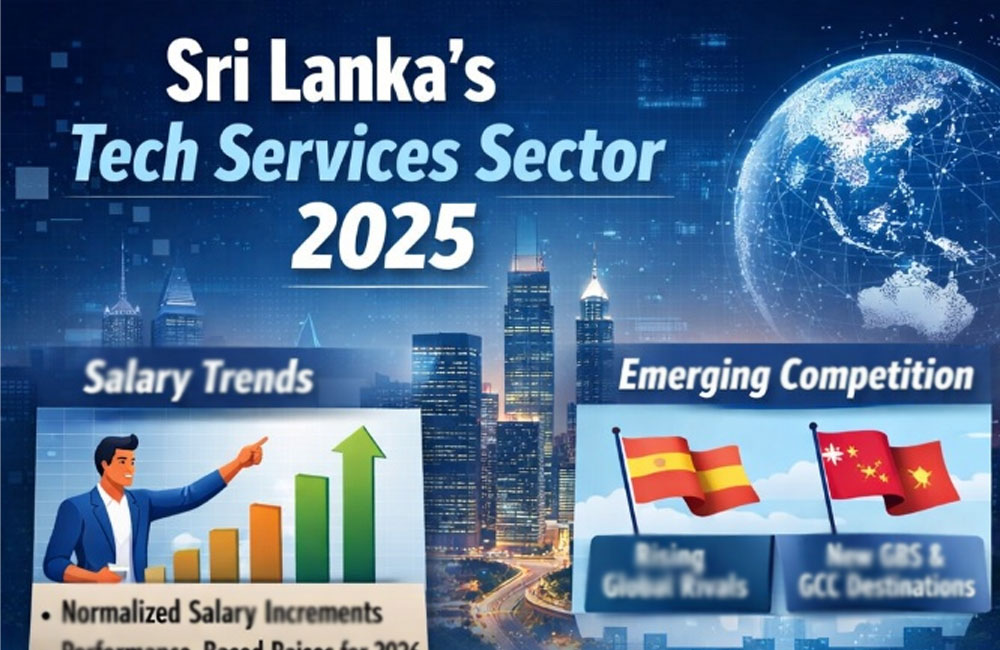
Sri Lanka Tech Firms Reset Pay and Talent Strategies
Sri Lanka’s technology services industry is entering a phase of recalibration, as companies adjust compensation and talent strategies to align with a more competitive and evolving global environment, according to the latest Compensation and Benefits Survey released by SLASSCOM.
The study recorded a strong participation rate, with 72% of organisations from the 2024 survey returning this year, reflecting both continuity and growing confidence in the survey as a benchmark for industry decision-making. The findings point to a sector that is moving beyond crisis-driven responses and towards more structured, performance-oriented reward frameworks.
One of the most notable trends is the stabilisation of salary increments. During the height of Sri Lanka’s economic crisis, IT and BPM companies implemented unusually high salary increases to support employees facing inflationary pressures and currency volatility. In 2025, however, increment budgets have normalised, indicating a shift towards sustainability rather than short-term relief.
Looking ahead to 2026, IT companies are planning differentiated salary adjustments, with higher increases targeted at top performers compared to regular performers. BPM companies, meanwhile, are projecting relatively higher overall increments. This reflects a broader transition toward performance-linked compensation and a growing emphasis on measurable contribution rather than uniform pay hikes.
The survey also highlights a gradual transformation in organisational structures. Skill-based models are gaining traction, allowing companies to align rewards more closely with critical capabilities rather than traditional job titles. Alongside this, organisations are expanding their focus beyond basic pay to include career development opportunities, continuous learning, and skills enhancement as key components of total rewards.
Despite the growing availability of flexible and non-monetary benefits, total cash compensation remains the most important factor for employees. However, companies are increasingly offering personalised benefit options to cater to a multi-generational workforce with varying expectations around work-life balance and career progression.
Employee migration, while still a concern, has declined in urgency, dropping from the top issue in 2024 to second place in 2025. Nonetheless, outward mobility continues, particularly among skilled professionals pursuing higher education and international exposure.
From a global perspective, the report underscores intensifying competition among outsourcing and Global Capability Centre (GCC) destinations. While Sri Lanka remains a key player, two new countries have emerged in 2025 as attractive alternatives for GBS operations and GCC expansion. This development highlights the need for Sri Lanka to strengthen both talent quality and cost competitiveness to protect its position.
The survey also reveals that 52% of participating organisations operate as GCCs, reinforcing the sector’s importance to Sri Lanka’s export services economy. SLASSCOM Chairperson Shehani Seneviratne noted that the report provides critical insights to help organisations make forward-looking decisions and sustain Sri Lanka’s role as an innovative technology hub.
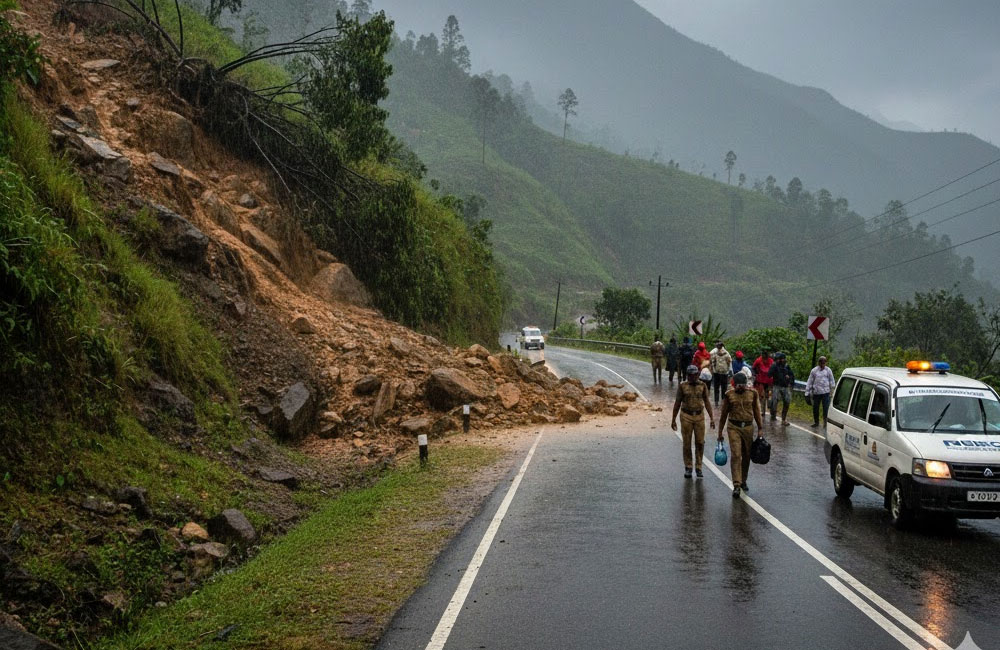
NBRO Issues Red Landslide Alerts for Seven Divisions in Kandy and Nuwara Eliya
The National Building Research Organisation (NBRO) has issued Level 3 “Red” landslide warnings for seven Divisional Secretariat Divisions (DSDs) in the Kandy and Nuwara Eliya districts, citing ongoing adverse weather conditions.According to the NBRO, the evacuation-level alerts will remain in force until 2.30 a.m. tomorrow (19), and residents in the affected locations are urged to remain vigilant and comply with safety instructions.
In the Kandy District, the warnings apply to the Doluwa, Udadumbara and Medadumbara Divisional Secretariat areas and surrounding localities. Meanwhile, in the Nuwara Eliya District, residents of the Mathurata, Nildandahinna, Hanguranketha and Walapane Divisional Secretariat divisions have also been placed under the highest level of landslide alert.
The NBRO stated that the warnings were issued as a precautionary measure in response to persistent rainfall and unstable ground conditions, and advised the public to prioritize safety and be prepared to evacuate if necessary.

Sri Lanka IT-BPO Sector Enters Post-Crisis Pay Reset
Sri Lanka’s technology services industry spanning information technology (IT), business process management (BPM), and tech-enabled services is moving into a phase of salary normalisation after several years of crisis-driven wage escalation. According to the SLASSCOM Compensation and Benefits Survey Report 2025, companies are gradually stepping away from emergency-era pay hikes and refocusing remuneration policies on productivity, skills, and performance.
The survey, which covers a broad cross-section of IT and BPM firms, indicates that incremental salary budgets are stabilising at more sustainable levels. This marks a shift from the aggressive compensation adjustments seen during the economic crisis, when firms struggled to retain talent amid currency depreciation, high inflation, and large-scale labour migration.
While demand for specialised digital skills remains intense, employers are increasingly selective, rewarding high-impact roles rather than across-the-board increases.
This recalibration is taking place against a challenging global economic backdrop. Between July 2019 and September 2025, the US Consumer Price Index for All Urban Consumers (CPI-U) climbed from 255.21 to 324.36 points an increase of roughly 27 percent. Inflationary pressures surged particularly in 2021 and 2022 following sharp interest rate cuts under the US Federal Reserve’s floor system.
Rising inflation has since become a politically and socially sensitive issue in the United States, coinciding with growing economic nationalism, tighter immigration policies, and increased import tariffs.
Global inflation has had cascading effects on public finances worldwide. High and volatile cost environments have complicated budgeting processes, turning long-term projects into fiscal risks as costs continuously outpace original estimates. Economists note that in earlier low-inflation eras, fiscal deficits could often be corrected through modest tax adjustments.
In contrast, sustained inflation now forces governments to rely on complex statistical modelling as expenditures chase rising revenues.
Sri Lanka has not been immune to these dynamics. Persistent currency depreciation since the early 1980s has undermined fiscal stability, particularly as global inflation cycles diverged from domestic monetary conditions. These structural vulnerabilities have indirectly shaped the operating environment for export-oriented sectors such as IT-BPO.
Despite these pressures, the sector remains one of Sri Lanka’s most resilient foreign exchange earners. Computer and IT/BPO-related services exports reached US$671.6 million in the first ten months of 2025, according to the Central Bank of Sri Lanka, though this represented a 3.8 percent decline compared to the same period in 2024. For the full year 2024, export earnings stood at US$848 million, reflecting a 6.7 percent annual increase.
Industry analysts say the current wage normalisation reflects a maturing sector adjusting to global cost realities rather than a contraction. Firms are prioritising efficiency, automation, and value-added services, signalling a strategic shift aimed at preserving competitiveness while navigating tighter global margins.

Parliament to Take Up Rs. 500B Supplementary Allocation for Disaster Recovery
Parliament is set to consider a Rs. 500 billion supplementary estimate today , aimed at assisting communities impacted by the recent sudden disaster situation and supporting livelihood restoration efforts.The special parliamentary sittings for today and tomorrow (19) have been convened at the request of Prime Minister Dr. Harini Amarasuriya, in line with Standing Order 16, according to Secretary-General of Parliament Kushani Rohanadeera.
The decision to summon Parliament was taken at a meeting of the held yesterday (17) under the chairmanship of Speaker Dr. Jagath Wickramaratne, as stated in an official release issued by the Department of Communications of Parliament.
Parliament will meet at 9.30 a.m. today, during which the proposed supplementary allocation for the year 2026 will be formally presented and referred to the Committee on Public Finance for review. Following this, an Adjournment Debate initiated by the Government will take place, focusing on the national situation in the aftermath of the adverse weather-related disaster, and will continue until 5.30 p.m.
The House is scheduled to reconvene tomorrow from 9.30 a.m. to 5.30 p.m., during which the Rs. 500 billion supplementary estimate will be debated and taken up for approval.
Meanwhile, the Speaker had earlier announced, through an Extraordinary Gazette dated December 13, that Parliament would be summoned on December 18, 2025, after receiving a formal request from the Prime Minister in accordance with parliamentary standing orders.
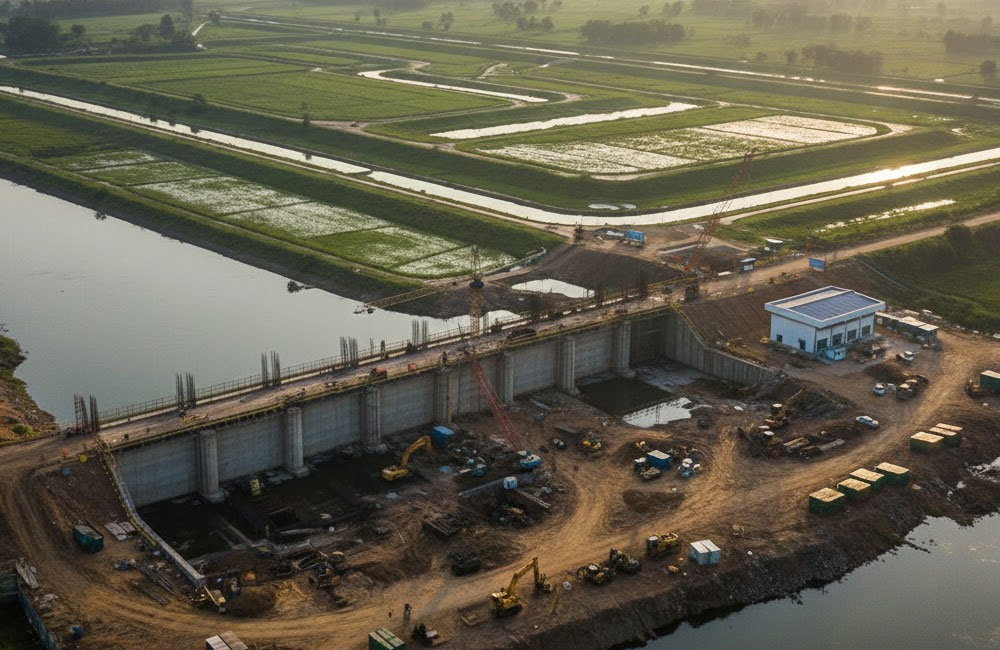
Lower Malwathu Oya Project Returns Amid Cost, Currency Pressures
After years of delay caused by the COVID-19 pandemic and Sri Lanka’s worst economic crisis in decades, the Lower Malwathu Oya multipurpose hydro power project is set to resume following renewed Cabinet approval. The project, originally sanctioned in July 2019 at an estimated cost of Rs. 22.9 billion, now carries a revised price tag of Rs. 47.18 billion, more than doubling in rupee terms over six years.
The revised estimate, submitted to the Cabinet in December 2025, reflects a 106 percent increase in costs, largely driven by the sharp depreciation of the Sri Lankan rupee and prolonged project suspension. Between mid-2019 and late 2025, the rupee weakened from Rs. 176 to around Rs. 308 per US dollar, a collapse of nearly 74 percent, following aggressive monetary easing, open market operations, and sweeping tax cuts introduced to stimulate growth.
These policy decisions, implemented under Sri Lanka’s flexible inflation-targeting framework without a fully floating exchange rate, ultimately triggered serial balance-of-payments crises. The fallout culminated in a sovereign default and left large infrastructure projects such as Lower Malwathu Oya stranded midway.
Despite these challenges, the project’s revival is being viewed as strategically important, particularly for the agriculture-dependent Northern Province. Once completed, the scheme is expected to enhance irrigation for 24,450 acres of farmland under the Giant’s Tank, 6,230 acres under the Akitamuruppu Tank, and bring 2,000 acres of new land under cultivation. These improvements could significantly raise crop yields, reduce dependency on rainfall, and stabilize farmer incomes.
Beyond irrigation, the project includes a small hydro power component capable of generating 4.28 gigawatts, contributing to Sri Lanka’s renewable energy mix at a time when the country is seeking to reduce reliance on imported fossil fuels. The scheme also aims to supply two million cubic metres of drinking water, addressing chronic water shortages in surrounding communities.
From a sustainability perspective, the project aligns with long-term national priorities on food security, climate resilience, and clean energy. However, analysts caution that its economic viability will depend heavily on disciplined cost control, timely completion, and stronger macroeconomic management. Without these, escalating costs could erode projected returns and place additional pressure on public finances already strained by debt restructuring commitments.
As Sri Lanka cautiously emerges from crisis, the Lower Malwathu Oya project stands as both a symbol of recovery and a reminder of how macroeconomic instability can sharply inflate the cost of development.

Heavy Showers and Strong Winds Forecast Across Several Regions Today
The Department of Meteorology has forecast continued unsettled weather across the island today, with fairly heavy rainfall and strong winds expected in multiple regions due to the ongoing influence of an easterly wave.
Intermittent showers are likely in the North-Central, Eastern, Uva and Central provinces, while several spells of rain are anticipated in the Northern and North-Western provinces. According to the Met Department, rainfall amounts exceeding 75 mm may be recorded in some locations within the Eastern, Uva and Central provinces, as well as the Polonnaruwa district.
In other parts of the country, showers or thundershowers may develop after 1.00 p.m., with certain areas potentially receiving rainfall of more than 50 mm.
The forecast also indicates that strong winds, reaching speeds of around 40–50 kmph, could occur at times across the eastern slopes of the central hills, the Northern, North-Central and North-Western provinces, and in the Trincomalee, Hambantota and Monaragala districts.Additionally, misty conditions are expected during the early morning hours in parts of the Sabaragamuwa, Western and Central provinces, as well as in the Galle and Matara districts.
The public has been advised to take necessary precautions to reduce potential damage from localized strong winds and lightning associated with thundershowers.
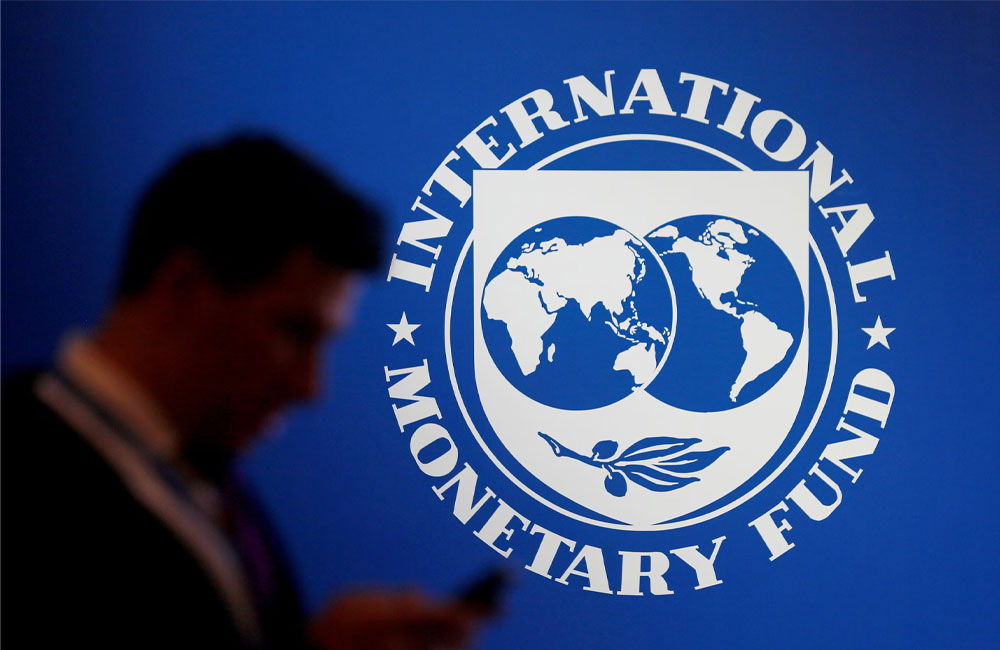
IMF Ties Sri Lanka Aid to Discipline, Not Sympathy
Sri Lanka’s request for emergency financing has once again brought into sharp focus the International Monetary Fund’s firm insistence on policy discipline over political expediency. The IMF Executive Board is scheduled to meet on December 19 to consider Sri Lanka’s request for US$200 million under the Rapid Financing Instrument (RFI), sought in the aftermath of Cyclone Ditwah, which struck in the final week of November.
While the RFI is designed for swift disbursement and carries no post-financing reviews, the broader context in which the request is being made is far from straightforward. Sri Lanka remains under a US$2.9 billion Extended Fund Facility (EFF) programme, where progress is tightly measured against quantitative benchmarks and structural reforms. IMF officials have made it clear that emergency assistance does not dilute expectations under the main programme.
The cyclone has materially altered the country’s fiscal outlook. Government expenditure for next year is now projected to increase by at least Rs. 500 billion, significantly reshaping the 2026 budget framework upon which current IMF targets were built. As a result, the fourth review of the EFF originally expected to conclude by mid-December has been deferred. An IMF mission is now anticipated in January 2026 to renegotiate a revised staff-level agreement reflecting the changed fiscal realities.
Complicating matters further is the Central Bank’s limited ability to accumulate foreign exchange reserves. Following a policy rate cut in March and a broader easing of deflationary measures, reserve accumulation has fallen short of initial IMF expectations. Although the government and the Central Bank have continued to meet external debt repayment obligations, reserve buffers remain under strain.
Recent budget-support financing from multilateral lenders, particularly the Asian Development Bank, has offered some relief. These facilities, which do not feed into domestic spending, are expected to either bolster reserves or directly service external liabilities. Meanwhile, the Central Bank continues to supply foreign currency to the Treasury for debt repayments—an arrangement analysts argue distorts monetary policy signals.
Market observers warn that Sri Lanka’s interest rate trajectory is now shaped less by inflation dynamics and more by IMF-mandated reserve targets. The rupee’s depreciation in 2025 has been attributed to reduced deflationary policy and sustained Central Bank dollar purchases, which critics say amount to indirect monetisation of the balance of payments while constraining private-sector access to foreign exchange.
Against this backdrop, economists argue that the IMF’s current stance is unambiguous: emergency relief may be granted, but it does not replace the need for tighter fiscal control, credible monetary discipline, and adherence to EFF benchmarks conditions shaped by hard lessons from Sri Lanka’s 2022 sovereign default.
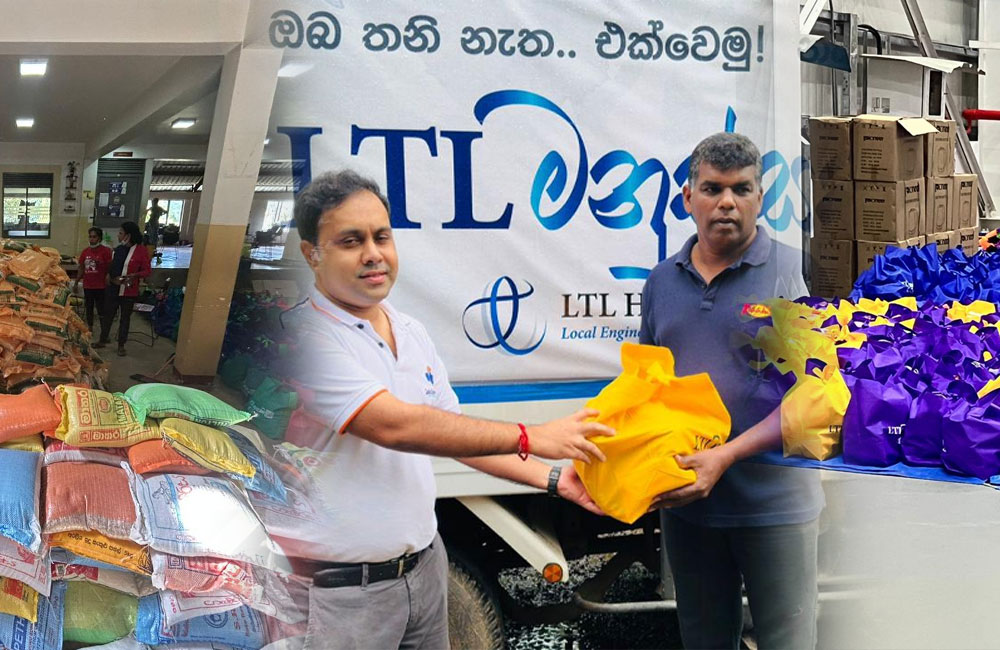
LTL Holdings expands disaster relief efforts
LTL Holdings has intensified humanitarian assistance for communities hit by recent floods, combining its technical expertise in the power sector with disaster relief efforts.
Under its “LTL Humanity” programme, the company has distributed 17,000 dry ration packs to households affected by flooding, with an additional 1,000 packs prepared for immediate dispatch.
Essential household kits, including bedding, mats, and daily necessities, have been delivered to 250 families, while 600 more kits are being readied for rapid distribution.
The programme also provides guidance on safely restoring electricity to flood-damaged homes, reflecting LTL Holdings’ dual focus on technical restoration and humanitarian support.
“LTL Humanity is aimed at meeting the immediate needs of affected populations while helping them rebuild their daily routines and homes,” the company said, expressing gratitude to partners and stakeholders assisting the initiative.
The company pledged to continue relief efforts until communities are fully restored, highlighting its commitment to both public service and social responsibility in the aftermath of Sri Lanka’s natural disasters.

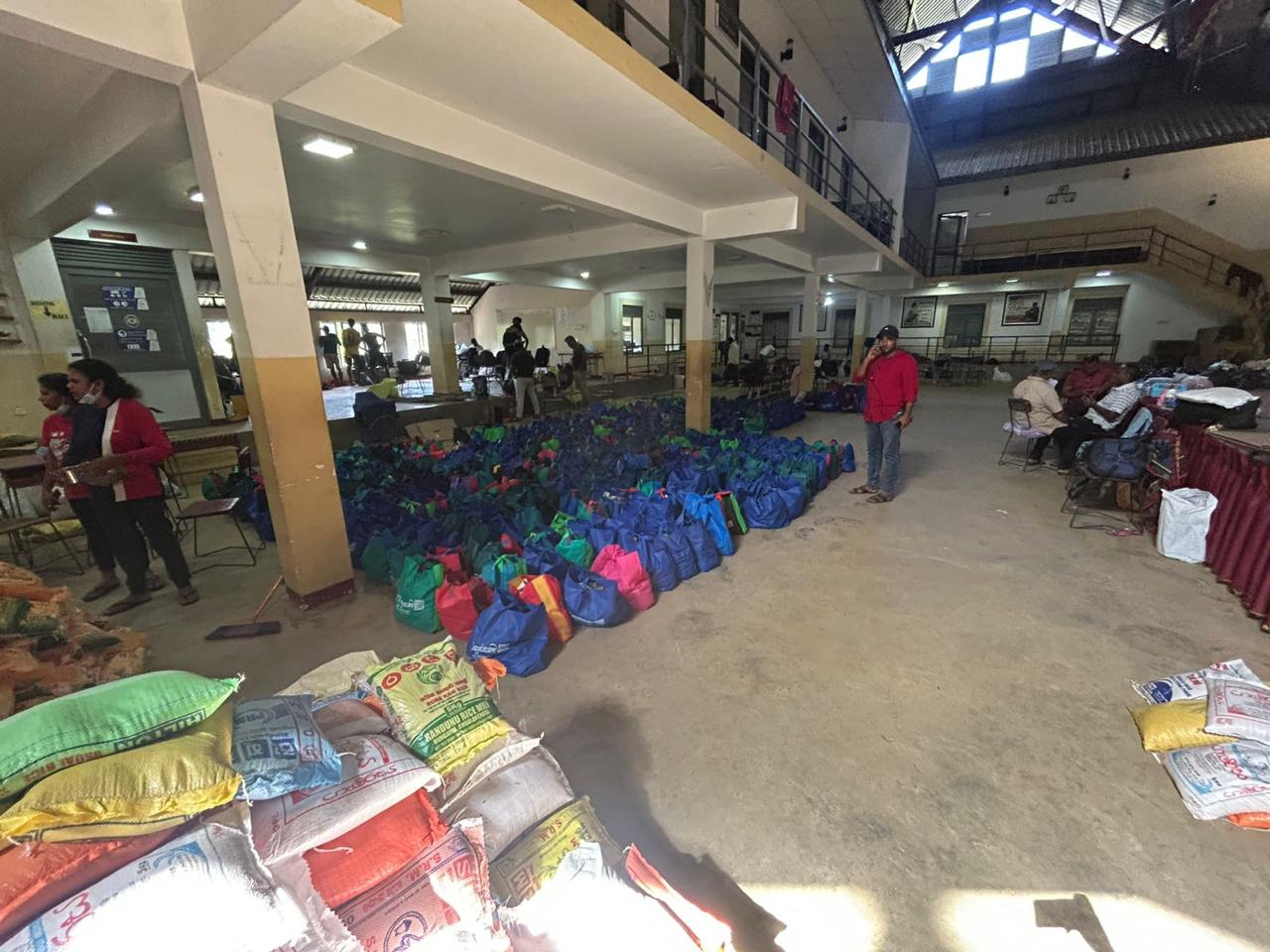

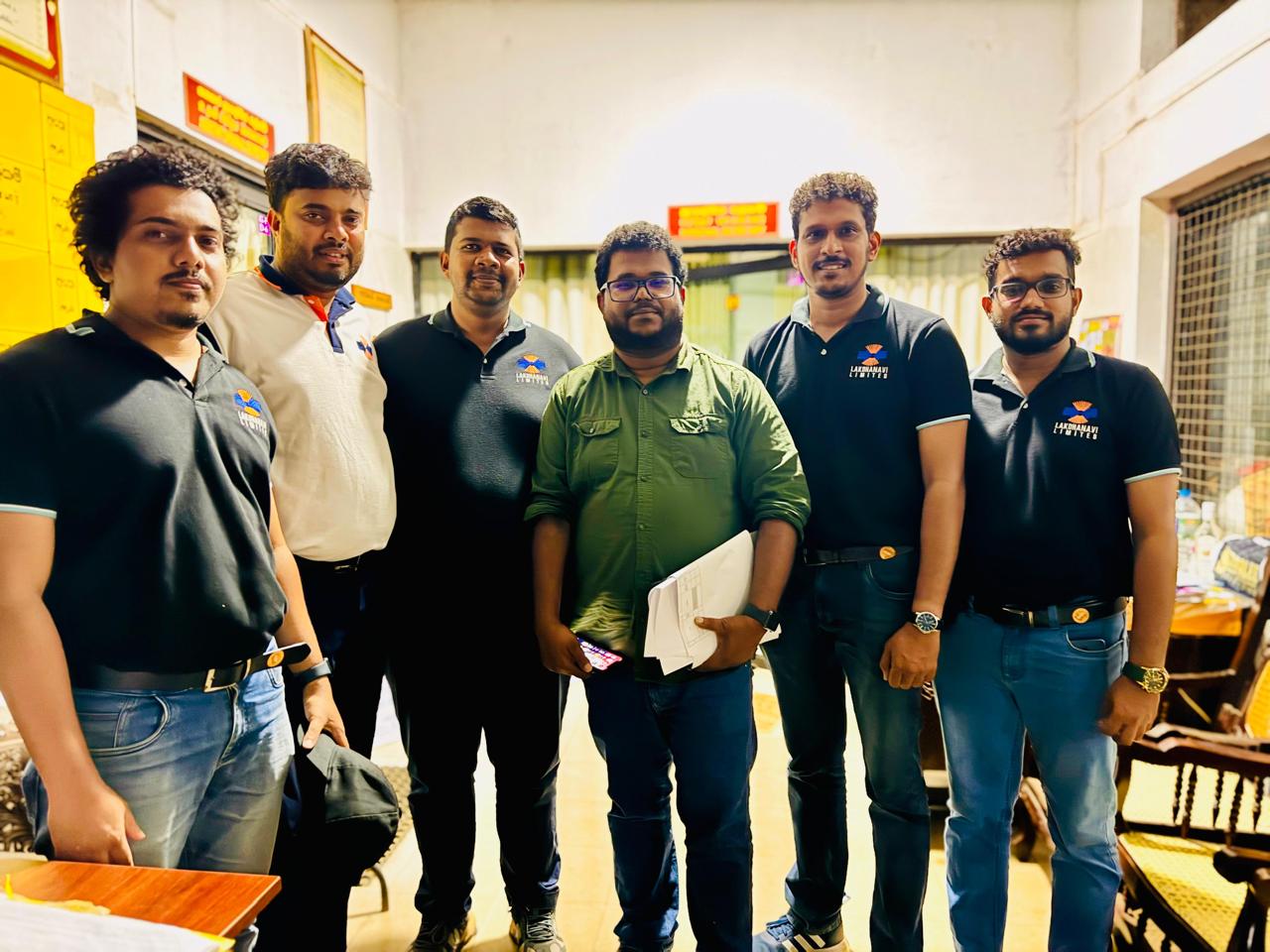

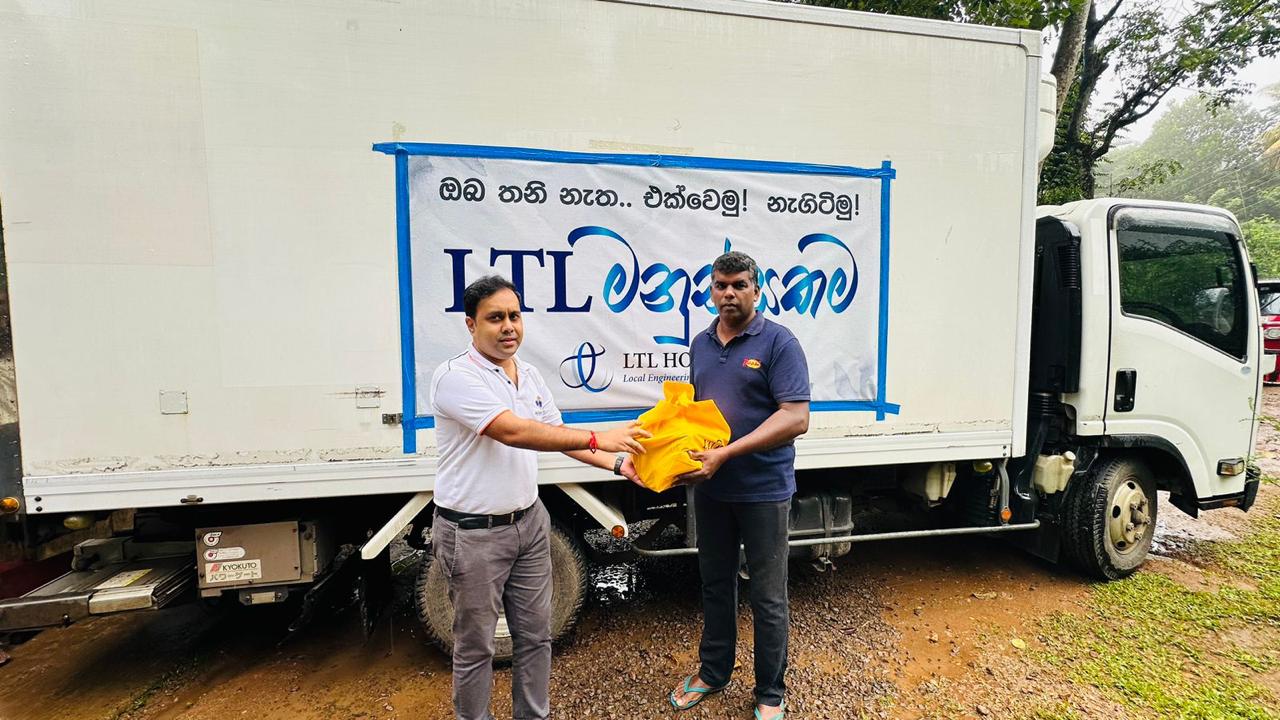
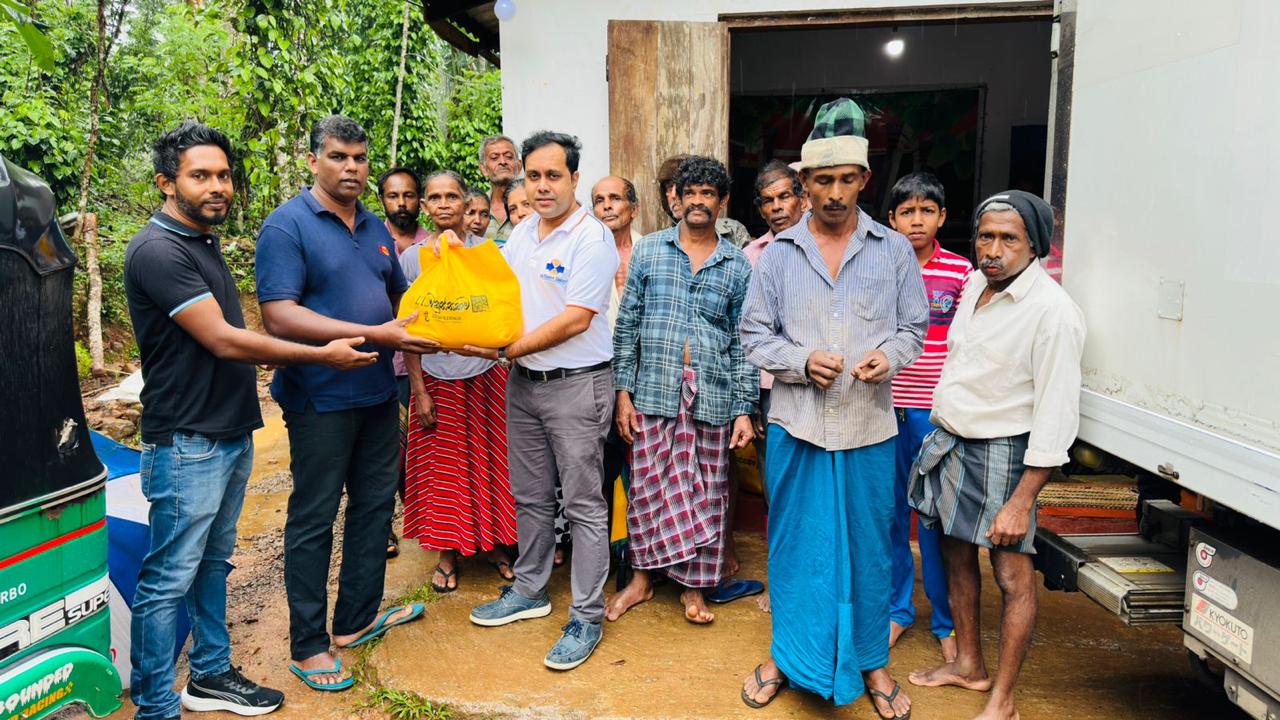
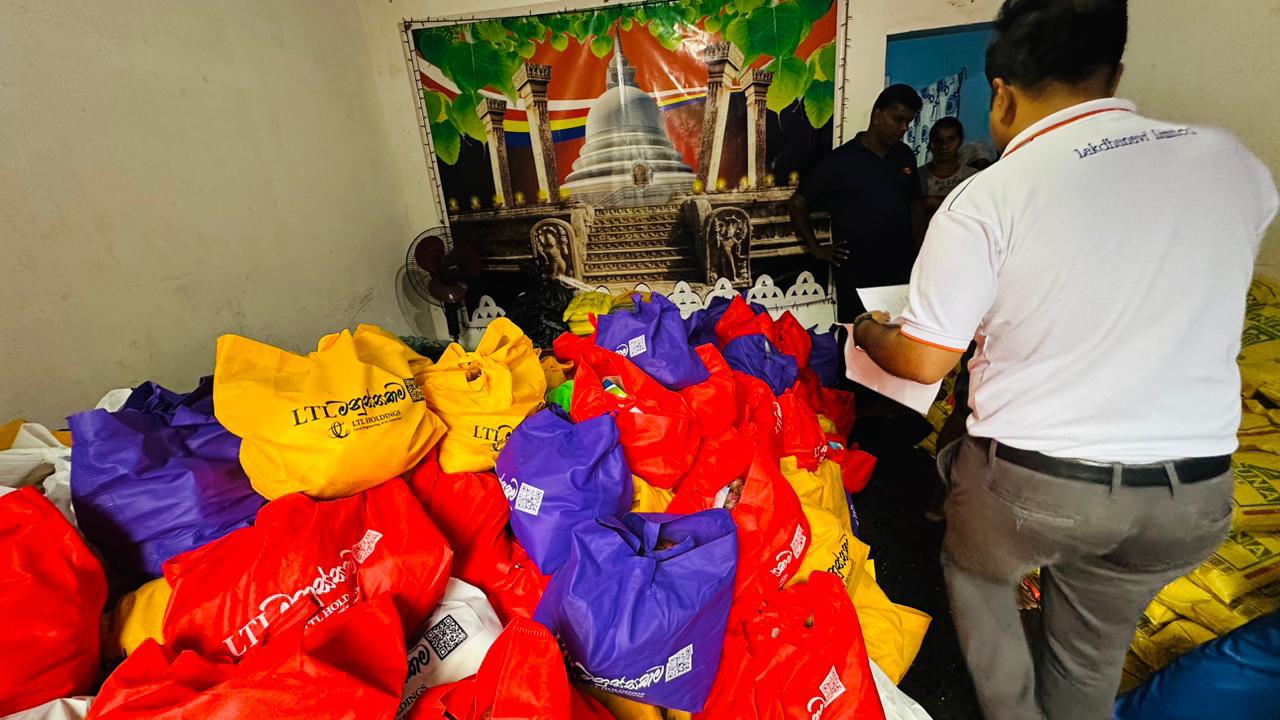


Page 7 of 638